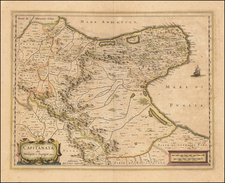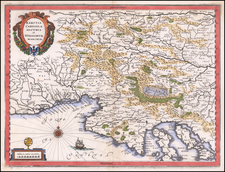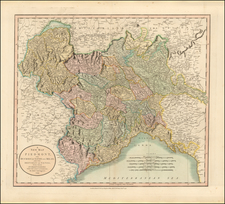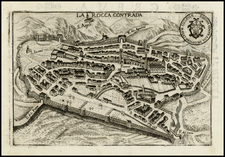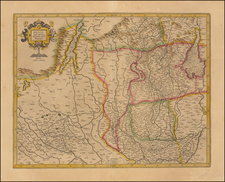Scarce birds-eye view of the fortified town of Tortona, then located in the Duchy of Milano. Three main gates into the town are located, along with bridges across the Scrivia and a detailed plan of the interior of the City, within its walls, including approximately 10 major churches and public buildings.
Originally known as Derthona, Tortona was among the oldest colonies under Roman rule on the western side of the Po Valley. The City dates the the 2nd Century BC, at the juncture of the Via Postumia and Via Aemilia Scauri, which joined to become the Via Julia Augusta. During the period of Roman Rule, Tortona was an important military station.
Tortona was the home to one of the earliest Bishropricks in Italy, but the early history is almost certainly myth, such as Saint Marcianus of Tortona, referred to as the first Bishop of Piedmont and a supposed disciple of Barnabas. The city was ruled by the Bishop until the 9th Century AD. It became a free town in 1090 under the archbishop of Milan and was later assigned to the archdiocese of Genoa in 1133. In 1155, the City was destroyed for the first time by Frederick the Barbarian.
During the Middle Ages, Tortona was allied to the Guelphs and destroyed several more times. The town changed hands a number of times before 1347, when it was finally taken by the Duchy of Milan, which controlled the town until 1735. Thereafter, the King of Sardinia occupied the town until the reunification of Italy, during which period Tortona was part of the House of Savoy.
This map appeared in Albrizzi's Storia di tutti i popoli del Mondo, the Italian edition of Thomas Salmon's popular History of the World.









